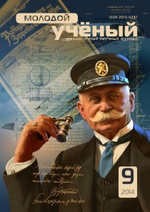Interior Ministry Troops of the Russian Federation are known to have a peculiar structure. They are divided into regional commands, military formations and units of various tactical employment due to management requirements, the nature of missions and arms peculiarities.
Small groups of military personnel, embodied in the sub-units, have a special place in such a sophisticated organization. Their activity is cooperative and collective by nature. They interact in combat training, everyday life, being on guard, and combat readiness. Social communities of this sort are known as collective ones. Cohesion is an essential attribute of military personnel and provides high-performance combat action.
Along with improving individual work with each military man, developing the directions of combat training, strengthening military discipline, carrying out psychological professional selection, more and more often commanders and their seconds-in-command are convinced that it is impossible to develop military equipment and weapons qualitatively, maintain high combat readiness and win a modern battle without regard for a socio-psychological factor.
Without studying and developing the degree of subunit cohesion, it is impossible to create conditions for military personnel to do their professional duty thoroughly. As a consequence, formation of cohesion in different ways is considered to be naturally interesting.
Military personnel cohesion is unity of opinions, ideas, appraisals, positions and attitudes to the most significant factors, events and phenomena concerning life of a subunit and each soldier. It is a result and achievement of a particular level of a small group as well.
For more effective cohesion within the military personnel it is necessary to understand its structure comprising the following features:
- value-orientation unity;
- unity of actions and volitional unity;
- organizational unity;
- intellectual unity;
- emotional unity.
The value-orientation unity is a collective opinion which means that each military man must observe army regulations and orders of their commanders and chiefs; it is identity of positions and identical views on the purposes of service and combat activity, ways and achievements, standards of military personnel interaction and chief-subordinate interaction, current events and so on.
Unity of actions and volitional unity means high activity and coordination in military personnel, ability to be mobilized in order to overcome difficulties in the way of meeting the challenges facing the personnel.
Organizational unity is the high level of subunit organization. It is based on identity of individual and group interests, clear alignment of functions and allocation of responsibility, consistency of formal and informal structures, personnel ability to control their servicemen’s behavior and activity.
Intellectual unity is efficient collaborative comprehension and solution of general problems concerning personnel life activity.
Emotional unity means mood identity by experiencing this or that event and a high level of emotional identification.
Organizational unity has a leading part in personnel cohesion and it is based on value-orientation unity which is provided by a commander at the initial stage of team building [2].
It is necessary to emphasize that the psychological basis of soldiers’ unity is made by authorized interaction among them. It is developed in the course of service and everyday life together. The community of social and psychological features, which is considered by commanders (chiefs), is the favorable prerequisite for the military personnel cohesion. Thus, it is important to see that the soldiers who serve in a subunit were brought up in diverse sociocultural environments, they have unlike life experience, they have different nationalities and belong to ethnic, religious and other formations and groups. This retrospective factor considerably influences views, aims, positions, behavior and actions of military personnel.
It is therefore important to remember that any soldier’s attitude to their roles in military personnel is significantly influenced by their civilian life experience, as a rule, in peculiar social and ethnic surroundings. Ethnic environment keeps national culture, traditions and customs and plays a significant role provided that in the course of interaction people perceive and comprehend it as their own and needed. If the links to ethnic environment are denied, it will not be national. In this case it is very important to find out a true attitude of a military man to national, ethnic, religious and other extraordinary phenomena [3].
The above-mentioned peculiar psychological factor may influence the possibilities for personnel cohesion. As experience shows, providing that military personnel is intentionally built, a dynamic characteristic of cohesion gains encouraging results [1].
When the positions, roles and relations among military men are defined, the structure of the united military personnel tends to be stabilized. Structural changes can be caused only by exceptional circumstances. If the staff occasionally changes, there are continuous changes in its structure, it means that intra-positions and roles are continuously defined, relations are established again.
Thus, knowing cohesive personnel structure, a procedure for its building, current processes, relations among the military men, it is easier to establish conditions for active collaboration under which subordinates succeed objectives in the interests of their subunit without being ordered.
References:
1. Barabanschikov A.V. Military pedagogy and psychology. M. 1996 p.51.
2. Kolpakov V.Yu., Suvorov V.A., Sharuhin A.P. Organization of educational process in the military units of Interior Ministry Troops of Russia: Monograph / Edited by V.Yu. Novozhilov. – M .: Editorial office of “On Battle Station” magazine, 2012. p.159-160.
3. Working book of a military psychologist. M., 1999 p.59.







